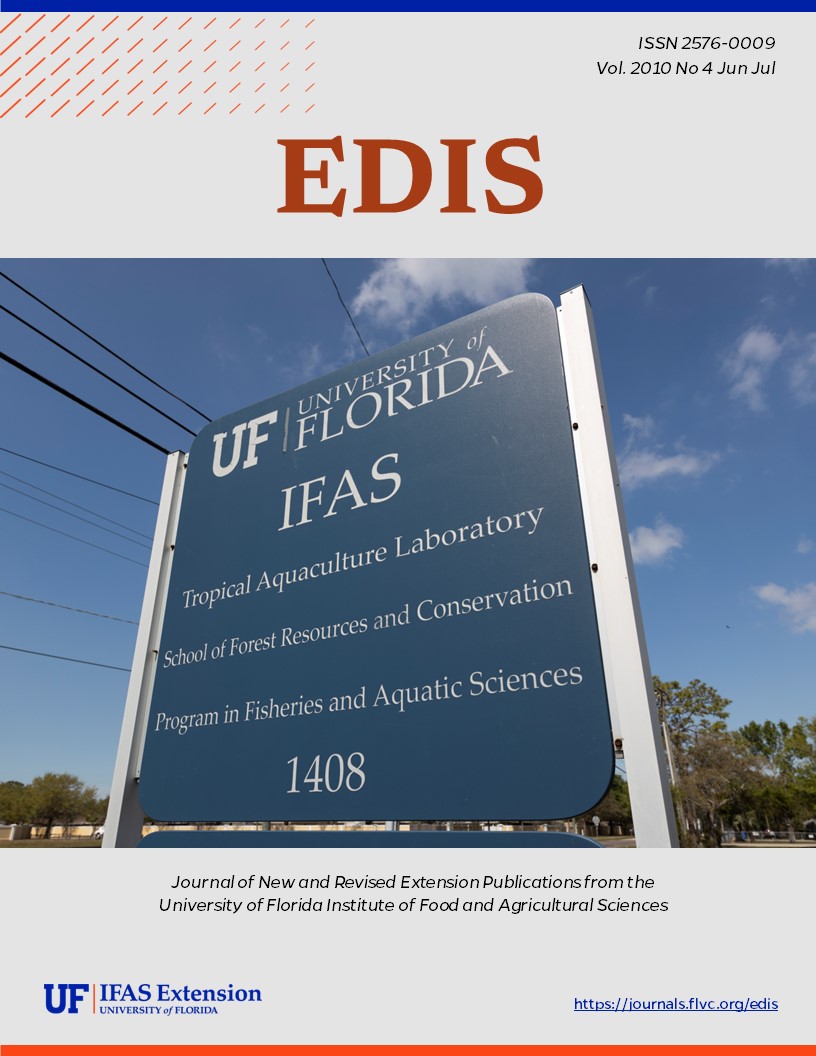Abstract
ENY-061, a 7-page illustrated fact sheet by Romy Krueger and Robert McSorley, summarizes recently published work on varying plant susceptibilities to root-knot nematodes and provides an overview of flower cultivars and their susceptibility to different species and races of root-knot nematodes, particularly M. incognita, M. javanica, and M. arenaria, all of which are common in Florida. Includes references. Published by the UF Department of Entomology and Nematology, May 2010.
ENY-061/IN850: Susceptibility of Flowers and Bedding Plants to Root-Knot Nematodes (ufl.edu)
References
Crow, W.T. 2007. Nematode management for bedding plants. ENY-052, Entomology & Nematology Department, Florida Cooperative Extension Service, Institute of Food and Agricultural Sciences, University of Florida, Gainesville, FL. (http://edis.ifas.ufl.edu/in470)
Crow, W.T., Woods, F.E. 2007. Nematode Assay Laboratory. ENY-027, Entomology & Nematology Department, Florida Cooperative Extension Service, Institute of Food and Agricultural Sciences, University of Florida, Gainesville, FL (http://edis.ifas.ufl.edu/sr011)
Krueger, R., Dover, K.E., McSorley, R. 2007. Marigold (Tagetes spp.) for nematode management, ENY-056 (NG045), Entomology & Nematology Department, Florida Cooperative Extension Service, Institute of Food and Agricultural Sciences, University of Florida, Gainesville, FL. (http://edis.ifas.ufl.edu/ng045) https://doi.org/10.32473/edis-ng045-2007
McSorley, R. 1994. Susceptibility of common bedding plants to root-knot nematodes. Proc. Fla. State Hort. Soc. 107: 430-432.
McSorley, R. Frederick, J.J. 1994. Response of some common annual bedding plants to three species of Meloidogyne. J. Nematol. 26: 773-777.
McSorley, R., Frederick, J.J. 2001. Host suitability of some vinca and salvia cultivars to two isolates of root-knot nematodes. Proc. Fla. State Hort. Soc. 114: 239-241.
Mendes, M.L., Dickson, D.W., Schoellhorn, R., Cetintas, R., Brito, J.A. 2007. Host status of petunia cultivars to root-knot nematodes. Nematol. Medit. 35: 91-94.
Om, N., McSorley, R., Frederick, J.J. 2008. Response of cut flowers and bedding plants to root-knot nematodes. Proc. Fla. State. Hort. Soc. 121: 370-373.
Stanley, J. Koklais-Burelle, N., Dickson, D. 2006. Host status of Meloidogyne floridensis on selected weeds and cover crops common to Florida. Nematropica 36:149.
Wang, K.-H., Dover, K., McSorley, R. 2004. Susceptibility of cultivars of Lisianthus, Eustoma grandiflorum to Meloidogyne incognita. Soil Crop Sci. Soc. Florida Proc. 64: 112-116.
Wang, K.-H., McSorley, R. 2005. Host status of several cut flower crops to the root-knot nematode, Meloidogyne incognita. Nematropica 35: 45-52.

